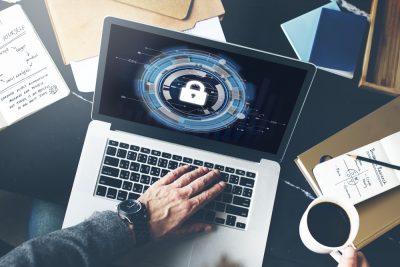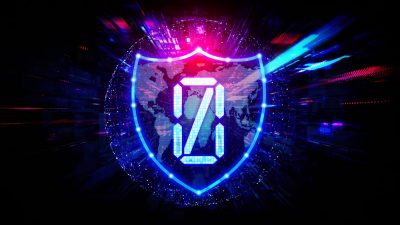Want to make the most of SaaS without putting sensitive information and data at stake? Then you are at the right place. In the first part of the blog, we explored SaaS and some of the security concerns. Here, in the second part, navigate through some detailed information that explains the essential dynamics and strategies to guard against potential threats.
So, let’s get at it without any further ado.
Why is SaaS security important?
Remember, when you choose cloud or SaaS applications for your business, it is essential to be cognizant of the fact that you are risking all of the data that is sensitive and necessary to run a business. This also can put the reputation and reliability factor of your business at stake.
Think, why would any individual or business want to work with you once their data is stolen or manipulated?
Unfortunately, statistics state that 60% of breaches involve flaws that have a patch ready, but security is compromised because the business is clueless about the patch and has not applied it.
Remember, great data security requires a team that consistently monitors for potential threats deploying the latest technology and skills, assuring that your systems are safe and always up to date.
Gain better clarity against these top 10 application security issues faced by SaaS
1. Lack of visibility and unsurety about what data is within cloud apps
2. The risk of data theft by malicious activities carried out by cybercriminals
3. Limited or insufficient control on who can access sensitive data
4. Lack of ability to monitor data that is in transit to and from cloud apps
5. Cloud apps purchased outside IT visibility (e.g., shadow IT)
6. A paucity of skilled employees to manage security for cloud apps
7. Failure to save misuse of data
8. Sophisticated ransomware attacks against the cloud provider
9. Failure to assess the security of the cloud application provider’s operations
10. Failing to keep up with the regulatory compliances
Why is SaaS better for your data protection strategy?
Majority businesses irrespective of its size and strength select SaaS for its speed, agility, and affordability quotient. So why do you need SaaS data protection? Well, while SaaS strengthens businesses by helping them with faster and smarter cloud solutions at affordable prices, the chances of vulnerability to data leaks and malicious attacks increase exceedingly. This is why SaaS Data protection becomes an inevitable aspect of security in the cloud.
Onboarding SaaS data protection offers a high level of security in the cloud that helps businesses feel more confident about information security.
Below is a list of threats SaaS data protection covers
1. Protecting yourself personally
At first, this might sound irrelevant. But the chances of you having deleted or lost critical files at some point in time can be a bitter reality.
According to a study by Dell EMC, 64% of data is lost due to human error. Now that is a disaster. Remember, the SaaS provider is bound to honor your requests, which sometimes are sent out unknowingly or by mistake. In the case of the absence of SaaS data protection, this data loss can result in a blunder for a business.
However, with SaaS data protection in place, a mistake can be reversed by getting easy access to backup and once again download the same file.
This also saves businesses from making panic calls to the SaaS vendor, pleading them to rectify the mistake or human error, hoping to recover lost data.
Important:
The majority of SaaS vendors do not provide data recovery. Therefore, signing up for SaaS data protection can save your business from a range of mishaps like hackers, natural disasters, and even human errors keeping information safe and intact.
2. Preventing insider breaches
Hackers undoubtedly are the primary threat to cybersecurity. However, businesses are often under the radar of insidious or insider threats that originates within the organization. It is understood that employees of an organization have access to a variety of business information and data. Not providing this access might hamper performance and progress.
But what happens when employees or ex-employees of a business play the villain? Such situations put the business at high risk and can result in immediate losses of revenue as well as reputation.
Such attacks might be intentional or malicious, but the damage is unavoidable, therefore having a SaaS data protection in place works as a trump card for businesses at the time of security crisis.
Note: Without SaaS data protection, businesses put information, data, revenue, reputation, and a lot more at stake.
3. Maintenance of data sync and compliance records
Experiencing data loss many times can shut a business. Sounds scary, right? But it is the bitter truth. Data loss can have horrifying aftereffects and end everything for a business. Looking up for lost data files and documents leads to loss of productivity and hampers the bottom line of business.
Most businesses believe data breaches to result in dramatic heists making headlines, but that is not the truth. Even minor mistakes or errors can cost a business.
Therefore, to keep safe the interest of the business, SaaS data protection is a must.
Closing thoughts
Data, data, and data is one of the most debated topics in boardrooms, while the second or the shared number one position goes to data security. Considering the pace of digital transformation and the quality of threat actors, I am sure we all need to agree with what the UK Information Commissioner Elizabeth Denham quotes,
“We’re all going to have to change how we think about data protection.”
SaaS data protection is the step toward that change, which is inevitable for every enterprise.
To gain an insider’s view on the topic, you may also download some of our latest whitepapers on security.














